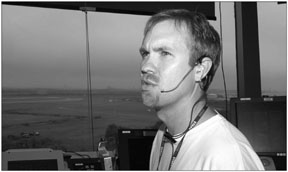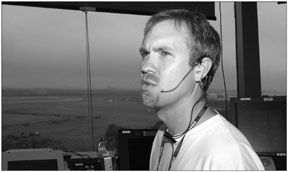
By Frank Bowlin
Weve all heard it: the hapless student or awkward pilot failing miserably to communicate with ATC. The worst examples can make you curl your toes in sympathetic embarrassment. Of course, no reader of Aviation Safety needs that much help, but we all can polish our technique a bit. In the extreme, failed communications can cause us to violate an instruction and result in an accident. So, effective communication with ATC is a significant safety requirement.
To illustrate the points, were including some of our top radio pet peeves. Some are amusing, but most are simply a style or word choice difference some of which most of us occasionally commit. A lot of the advice here is from general practice, AIM, personal experience and judgment. Use it if it works for you or adapt the basic requirements to your own style. And, of course, dont forget that listening is 50 percent of communication-often we need not tie up the Unicom frequency asking which runway is in use when we can simply listen for other pilots making their position reports.
Non-Towered Airports
Providing answers to the questions who youre calling, who you are, where you are and what youre going to do next is your best guide for communicating at non-towered airports. And, since the Unicom and Multicom (122.9 MHz) frequencies can be crowded, end each transmission at a non-towered airport with the airfield name: East Overshoe traffic, Cessna 1234A, 45 entry, three miles out from left downwind Runway 19, East Overshoe. Not all airports use the personal names they have in addition to their geographic names. If uncertain, use the geographic name.
Pet peeve #1: Unless youre the mayor of Chicago, youre not taking the active runway. Youre either departing or taxiing into position and hold. Homefield traffic, Cessna 1234A departing Runway One-Niner.
Pet peeve #2: At non-towered airports, a flight number call sign is useless. Use or add your aircraft type: Podunk traffic, regional jet… or Possum Breath traffic, Airline 987, a regional jet…
Pet peeve #3 for instrument traffic: Marker inbound on the ILS is utterly meaningless to most VFR-only traffic. Use terms a student on their first solo should know: Six-mile final to Runway One-Niner.
If you hear but cant see traffic that might be a conflict, talk with them. Also, if youre maneuvering to avoid a potential conflict, tell the other traffic what youre going to do:
…entering left downwind Runway Six behind the Mooney, in sight…
Placing The Call
We talk to ATC to originate a communication or answer one. Each action has different purposes and protocols with different considerations. When were originating the communication, we could be making an initial call-up as in a frequency change, or making a request.
We must check in to each new frequency. The process is the same for VFR and IFR: who youre calling, who you are and any additional information.
Pet peeve #4: Back when airliners had three pilots, it was common to add with you. No more. We recently heard an irritated controller tell one pilot, Cessna 1234A, I know everybody in this facility. Im looking around right now and I am certain you are NOT with me.
Although were only required to verify altitude once for each facility, not each controller, it has become common practice on all check-ins.Likewise, repeat assigned altitudes, crossing restrictions, headings and speeds. Big City Center, Cessna 1234A, one-four thousand descending one-zero thousand to cross Vortac at eight thousand, heading two-four-zero, speed two-ten. Its a mouthful, and a complicated set of clearances, but getting it all into the initial call-up will save everyone on the frequency time and the pain of the controller playing 20 questions with you to make sure youre doing what he or she expects.
Speaking of Numbers
We use lots of numbers on the radio with standard ways to say them. Altitudes should be stated as individual digits in thousands and hundreds while flight levels are simply the separate digits. Thus, 10,500 and FL310 are said as one zero thousand fife hundred (not ten point fife) and flight level three one zero. Headings and speeds are also stated in separate digits, identified as such: Heading one-four zero and one five zero knots.Likewise frequencies.
If a number like a frequency has a decimal point in it, in the U.S. we can say point but the full ICAO expression is decimal.
Pet peeve #5: There are no fractional frequencies. Thus, frequency 124.25 MHz is not one twenty-four and a quarter.
Just Ask, Or Ask To Ask?
Most other ATC communications you originate are requests, perhaps to pick up a clearance, request VFR radar service, a routing or altitude change. Use your judgment about whether to make your full request or merely interrupt, asking for recognition. If the frequency is busy or is completely quiet, indicating that the controller may be otherwise occupied, or if you have a lengthy request, its best to simply make a call, indicating what you want, but without details: Big City Center, Cessna 1234A, departed Homefield, request VFR advisories. However, if the frequency is active but not terribly busy or your request is simple, just say it all: Big City Center, Cessna 1234A, on the ground at Homefield, with one minute weather requesting clearance Beachland on file. Ready on Runway One Niner. Here, in less than 10 seconds, youve given the basics (who youre calling, who you are, what you want) and the additional information the controller needs to handle your request (current weather, ready for departure and runway). This can save a few exchanges to get the additional information.
Acknowledge
Last are simple acknowledgements of instructions. The controller tells you to do something and you express your understanding and compliance with the instruction by repeating it. As the frequency gets busier, youre likely to get more instructions in one transmission. The readback is more accurate and more useful to the controller if the information is in the same order as given. Thats the order the controller was thinking and there can be a lot of information. If you dont read it back in the same order, the controller is less likely to catch errors.
Heres a test. Whats wrong with this exchange?
Center: Cessna 1234A, Big City Center. Cross Gateway at and maintain niner thousand.
Cessna 1234A: Roger, Gateway at niner.
The controllers instructions were perfect but the answer needs help. First, although not exactly wrong, using Roger simply means youve received and understood his transmission. Since you prove that by repeating the instruction, Roger is superfluous.
Next, merely saying niner is technically insufficient. It is more correct to say, niner thousand. However, we believe here that just niner is absolutely clear and is shorter, making it acceptable. If additional instructions were given, there is some room for confusion and the full instruction should be read back: Gateway at niner thousand, speed one six zero knots.
Acknowledging the details of an instruction only really requires the numbers and units, not the full instruction. Its technically correct to repeat the full instruction, but often takes more time than required.
Consider the instruction, Cessna 1234A, Big City Center, cross Gateway at and maintain niner thousand, speed one six zero knots. After Gateway, fly heading zero-seven-zero and contact Big City Approach on one two tree point six.
First, for efficiency in our readback, we can drop the verbs. Next, we can drop other words that were used for clarity but arent necessary in the readback to prove our understanding. This leaves us with a concise, Gateway at niner thousand, one six zero knots. After Gateway, heading zero-seven-zero, Approach one two tree point six. Cessna 1234A This readback is absolutely clear and takes just over half the time the controller needed to give you the instructions.
Finally, pet peeve #6: Who said that? Were all guilty of this one. Its just too easy to assume a personal dialog with the controller and forget your call sign. Dont. Always use your call sign at the beginning or the end of your transmission.
Listening
Finally, dont forget to listen. Nothing is more frustrating for a number of the controllers calls to go unanswered. No matter how stimulating the conversation in your cockpit, someone needs to listen to ATC. Similarly, the simple act of listening can both eliminate several transmissions and get you more information than you could have expected. This is especially true at non-towered airports.
For example, how many times have you tried to raise a Unicom operator at a non-towered field only to be greeted with static? After ensuring youre using the correct frequency, you tried again, right? Why not listen for a change?Especially on good-weather days, chances are someone else is using the airport and making position reports. Listening for information such as the runway in use and the number of aircraft using it can tell you much more than any report from a Unicom operator.
The same is true when coming onto a new frequency. When it comes to etiquette on the ATC frequencies, few things scream amateur more than breaking into an ongoing conversaiton. Additionally, you have no idea how busy the next controller is, whether theres an emergency in progress or if someone is standing by. On dialing in the new frequency, listen for a minute or two to learn if theres anything going on with which your check-in might interfere. Then, if the coast is clear, make your usual transmission with all the necessary information. If the handoff was late and the new controller needs to talk to you immediately, he or she will call.
Just like when using Unicom at a non-towered airport, the other thing about simply listening is the huge amount of information you can glean. For example, pick just about any summer afternoon on a Ft. Worth or Kansas City Center frequency and you pretty much can figure out where the thunderstorms are and how to get around them without mashing your mic button. Then, all you need to do is coordinate your deviation with ATC.
All Together Now
Heres the pocket guide summary: Accuracy and efficiency are the keys. Think and listen first. Formulate your request in simple, complete terms.Acknowledge instructions with the major items, dropping all the filler words. Make us proud and avoid our pet peeves!
Youll sound even more like the pro you undoubtedly are-or will soon be.More important, youll get better response from ATC and youll be confident your radio communications are successfully contributing to your excellent safety record.
Also With This Article
“Tower Of Babble?”
“Read Back”
-After 30 years in the computer industry, Frank Bowlin recently joined the ranks of professional pilots. He now serves as a pilot for a large regional airline and as an independent flight instructor.




